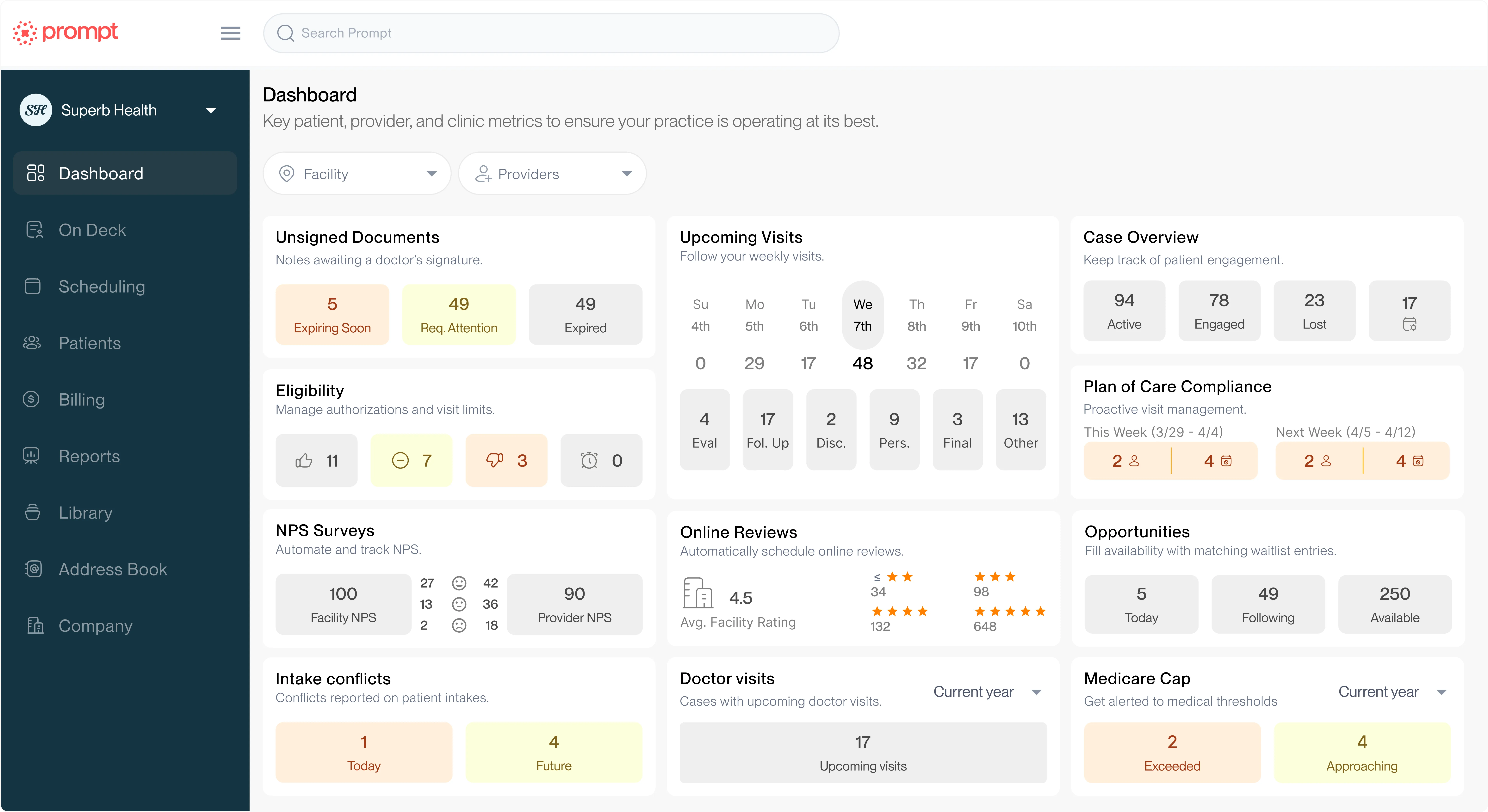See Prompt in action!


If you’re ready to roll out a variable compensation model but aren’t sure where to start, you’re not alone. We’ve helped many teams successfully launch Prompt Compensation (formerly OnusOne) in their clinics, and we’ve learned what works for clinics along the way.
Before you dive into the details, take a step back and set the stage for success. Implementing Compensation is a shift in how your team thinks about accountability, performance, and opportunity. When you approach it with transparency and confidence, your employees will, too.
That mindset makes all the difference as you move through each step. Here are our 10 tips for putting this mindset shift into practice:
Change is hard because habits are easy. People adopt new behaviors when the reason is compelling and personal.
In variable compensation conversations, that means connecting the “why” behind the change to outcomes employees care about: fair recognition, growth, clarity, and stability.
A rollout goes smoothly when organizational goals and employee goals line up. That alignment builds trust, inclusion, and psychological safety. In a culture where feedback flows both ways, even sensitive topics like pay become easier to discuss because everyone understands the shared purpose.
Introduce the idea early. Share the goals of the new compensation plan, who it helps, how it supports patients and the business, and what will stay the same. Without context, people fill gaps with worst-case scenarios. Clear information reduces anxiety and keeps rumors from spreading.
Bring the topic to the team before decisions are finalized. Invite your staff to ask questions and surface objections. Then, use what you learn to refine the plan and supporting tools.
Early, frequent communication increases buy-in because employees see themselves in the process rather than being surprised by the result. This will also give employees the chance to decide if a variable compensation model works for them, or if they’d be happier in a more traditional model in another clinic.
Change takes time, and it’s important to give your team enough time to get comfortable and ask questions. We recommend a 3-month implementation period to help people acclimate and ask questions.
Chances are, your new hires haven’t experienced variable compensation models at any other jobs, so they may need some time to get acclimated to Prompt Compensation. We recommend a 6-month grace period for new graduates, and a 3-month grace period for more experienced hires.
During this grace period, they’ll get paid a usual salary, but will have access to the Prompt Compensation dashboard and will be able to get used to it and ask questions.
They can also use this time to build relationships with their patients, earn trust, and establish their reputation in your clinic before their pay becomes performance-based.
While some people will like having a grace period to get acclimated to Prompt Compensation, some new employees may want to switch to a performance-based model right away, before their grace period ends.
If you have employees like that, let them switch earlier! It’s a clear sign that they’re confident and engaged, and you can show them you have confidence in them right away by allowing them to enroll early.
As you’re implementing a variable compensation program, you’ll be having meetings with your entire team, but it’s also important to have one-on-one conversations where your staff can ask questions and raise objections they may not be comfortable sharing with the entire group.
Use these conversations to offer clarifications, set expectations for timing, explain the criteria and decision making process for base pay, raises, and promotions, and connect the plan to that individual person’s goals and growth areas.
These personal conversations can help build excitement, or can help comfort anyone who might be nervous about the transition.
Most teams have similar questions when starting out with Compensation. Review our FAQs so you can anticipate and address their concerns quickly. The more prepared you are, the more trust and confidence your team will have in your decision.
Defining success early helps everyone stay aligned during a variable compensation rollout. A successful rollout means every employee understands how compensation decisions are made, what behaviors and outcomes are rewarded, and when to expect updates or reviews. It means questions are answered quickly and consistently, and communication feels open rather than one-sided.
You’ll know the transition is working when employees can explain the plan in their own words, set realistic goals for growth, and connect their daily performance to specific results. Managers should feel equipped to discuss pay confidently and fairly, and the team should be able to move forward with a shared understanding of how effort and reward align.
Rolling out Prompt Compensation is just the start. Keep the momentum going by celebrating early wins and sharing the data that shows progress with your team.
Regularly check in with your staff that are opted into this program for their feedback, adjust their pay profiles as needed, and reinforce the link between performance and reward. Consistency is key, both in how you communicate the change and how you apply the model.
Implementing Prompt Compensation in your clinic is a pay change, but it’s also a mindset shift. Over time, you’ll build a culture where shared success feels natural and motivating. Approach it with transparency, data, and confidence, and your team will follow your lead!
If you have more questions about implementation or best practices for rolling out Prompt Compensation to your team, reach out to one of our experts today.
{{demo-cta-banner}}
Help your practice grow
From intake to insights, Prompt is the all-in-one platform you need